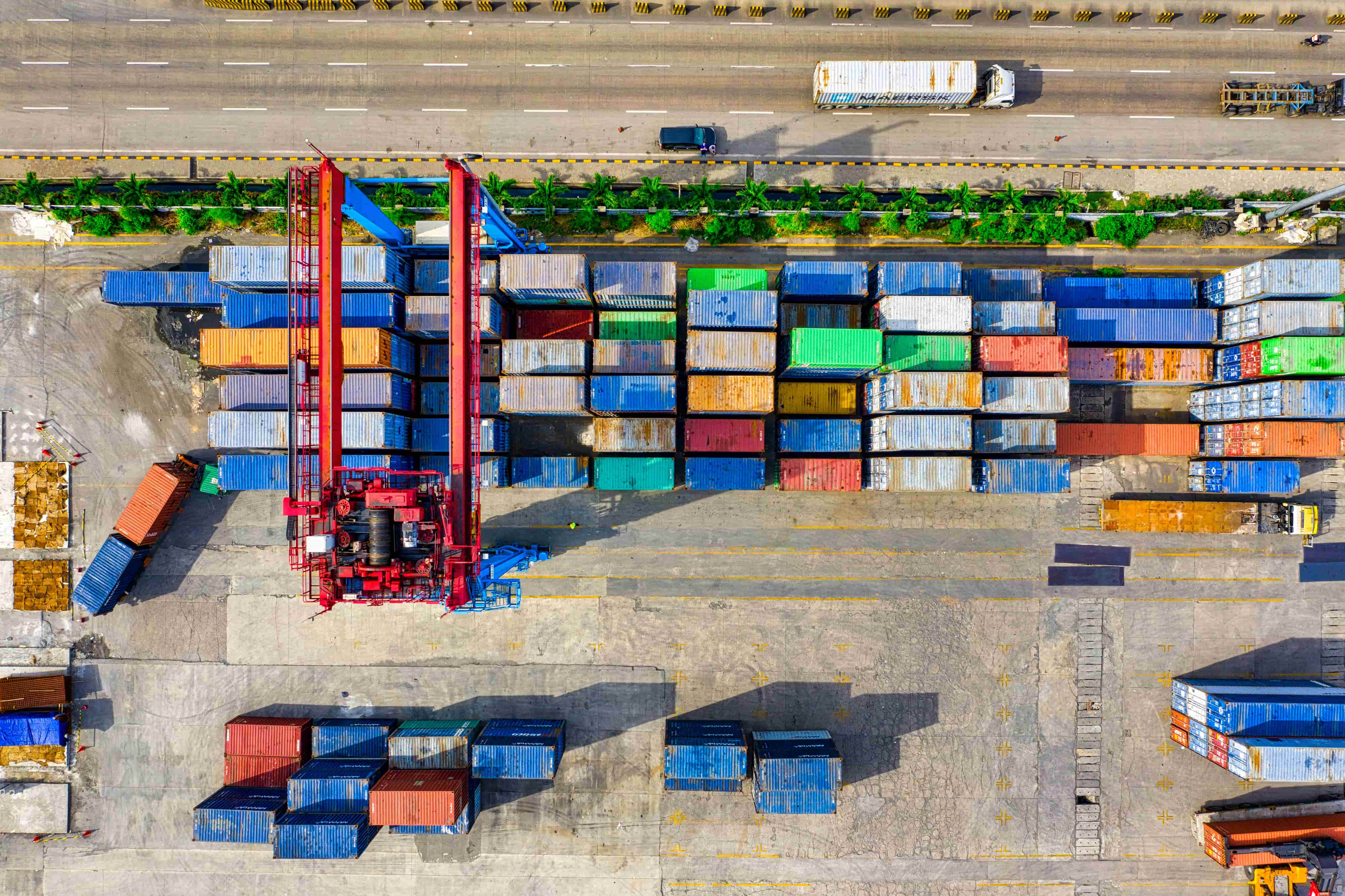
TABLE OF CONTENTS
International trade and the distribution of goods face constant challenges in a scenario where speed and efficiency are crucial for the end customer. In this search for more efficient solutions, multimodal transport is emerging as a logistics method that maximizes safety, optimizes total costs and overcomes geographical barriers.
In this blog we will tell you in detail what this type of cargo transit is, what their strengths are and how they can be combined.
What is multimodal transportation?
Multimodal transportation refers to the integration of various modes of transport - land, sea, river or air - to expedite and improve the transit of cargo from its origin to its destination.
Accordingly, it means that goods are moved from one mode of transport to another, such as trucks to trains, trains to ships or even airplanes, without the need to directly handle the goods themselves. The containers or pallets, therefore, remain intact throughout the entire journey, ensuring greater efficiency and protection of the unit load.
Despite the use of different means along the journey, the transport is considered multimodal as long as it meets these requirements:
- Use of a single transport document, called FIATA Multimodal Transport Bill of Lading (FBL). This is used when two or more means of transit are involved in a shipment.
- The cargo must remain intact and in its original form throughout the transport process, with no possibility of disassembly or fragmentation.
Features
This type of transfer has several particularities compared to more traditional means of transport, from the contracts to be signed to the scope and distance limit. Let's see some examples below:
Use of a single contract
It is the only system that allows the use of a single transportation contract, while the others require the use of multiple contracts.
Global reach
It covers both national and international areas, which gives it the capacity to reach practically any part of the world by making use of different modes of transportation.
Unlimited distance
It can travel both long and short distances, as there are no distance limitations for this type of transport.
Various means of transportation
It is feasible to combine different means of transport, for example, a ship, a railroad and a truck can be used for the same shipment.
Merchandise tracking
The cargo can be tracked through digital and satellite systems, which is a very useful aspect when it comes to shipments of great value and importance.
Advantages and disadvantages of multimodal transport
Some of the main advantages of multimodal transport are the reduction of total costs in shipping, control of the goods and coordination between the carrier and the customer; shorter delivery time as opposed to the more traditional one; easy tracking of the cargo because only one tracking interface is needed; and better management of the different vehicles and means used.
On the other hand, this type of transport also has disadvantages, such as legal and operational limitations in the application of international standards; the need for greater investment in coordination and logistics; and the absence of an infrastructure to facilitate operations.
In conclusion, multimodal transport has several advantages that make it an attractive option for companies. And despite its limitations, it remains a valuable option for those seeking to optimize their logistics processes and achieve greater efficiency in the movement of goods nationally and internationally.
Types of multimodal transportation combinations
Any type of multimodal transit involves combining at least two of the following modes of transportation listed below. Depending on the distance and route, both the transportation provider and the customer will evaluate the best options to reduce costs and speed up delivery times.
Ground transportation
It is the most widely used in multimodal transport and consists of point-to-point movement of cargo using vehicles ranging from small delivery vans to mega-trucks and trailers. In this line, road transit is divided into pallet, groupage and full truckload shipments.
Maritime transportation
It is the most used means of transport on international routes, and various types of vessels, such as container ships, bulk cargo ships and refrigerated cargo ships, are used for this purpose.
Air transportation
Although it is more expensive, it is the fastest option of all. Its main advantage is its availability and the speed with which deliveries are made, since it is possible to send all types of merchandise to any part of the world in just one day.
Rail transport
It has experienced an increase in demand in recent years because it reduces transportation costs and speeds up delivery times considerably, especially for long-distance shipments.
Finally, it is important to keep in mind that each type of multimodal transport has its own characteristics and benefits, and the choice will depend on the specific needs and preferences of each customer or transport provider.
Introducing the new way to experience international freight forwarding
KLog.co is the leading technology company for international freight forwarding in Latin America, which through its digital platform has managed to deliver complete visibility and control of the import and export process for companies of all sizes and industries.
Through its innovative software it is possible to merge all the steps of the supply chain, having full management capacity and visibility of the transportation of goods, even if you have movements with other freight forwarders. Due to these technological solutions you can have a fully customized control center, centralizing all shipments and optimizing the supply chain.
Today, KLog.co supports customers with operations throughout the region, with hundreds of agents around the world. Currently, its offices are located in Chile, Peru, Bolivia and Mexico, and are constantly working to continue expanding.
Learn more at KLog.co
Sources:
https://economipedia.com/definiciones/transporte-multimodal.html
https://www.transeop.com/blog/transporte-multimodal/29/
https://www.diariodelexportador.com/2018/05/documentos-utilizados-en-el-transporte_99.html